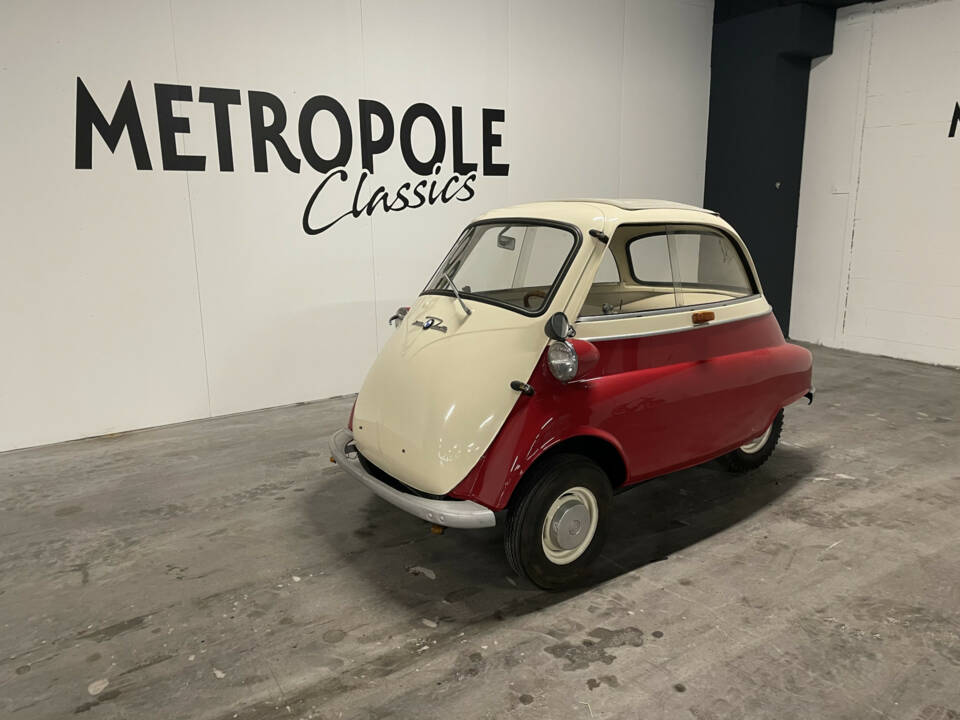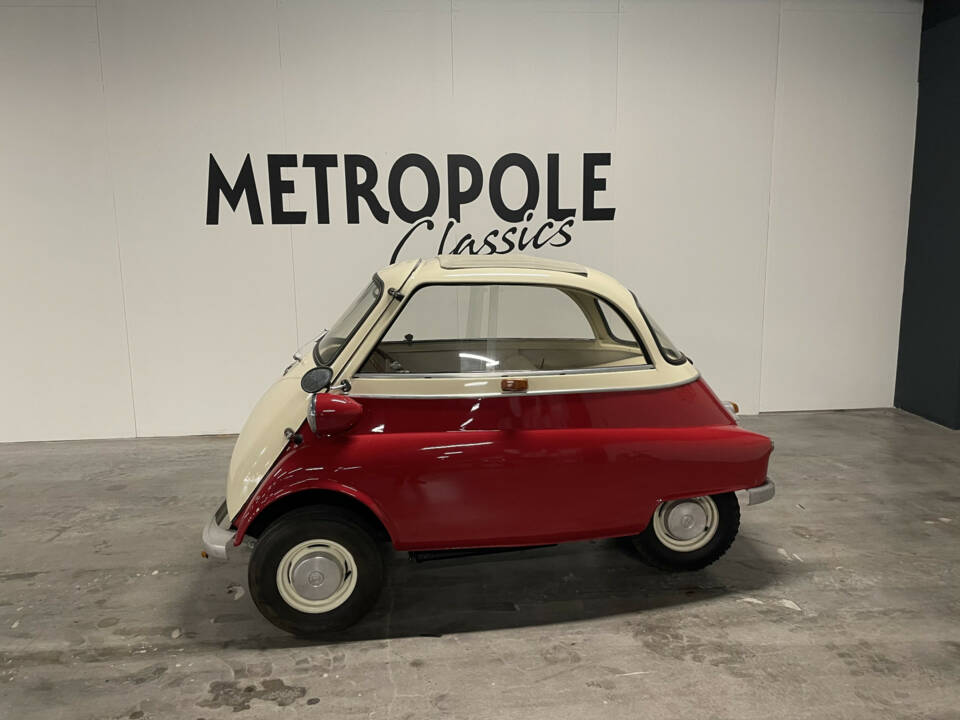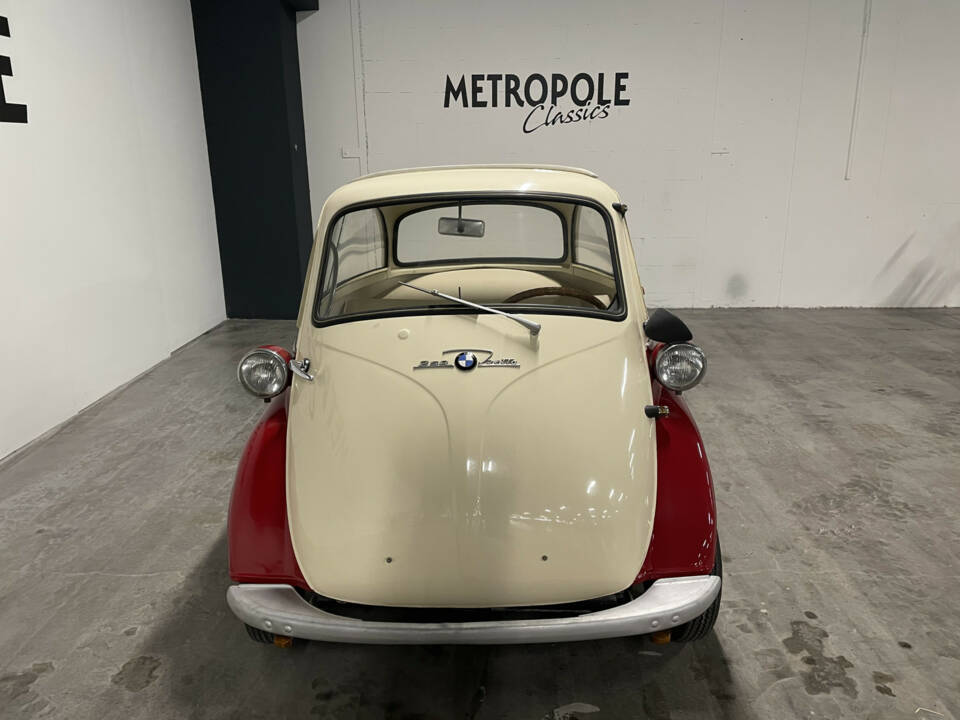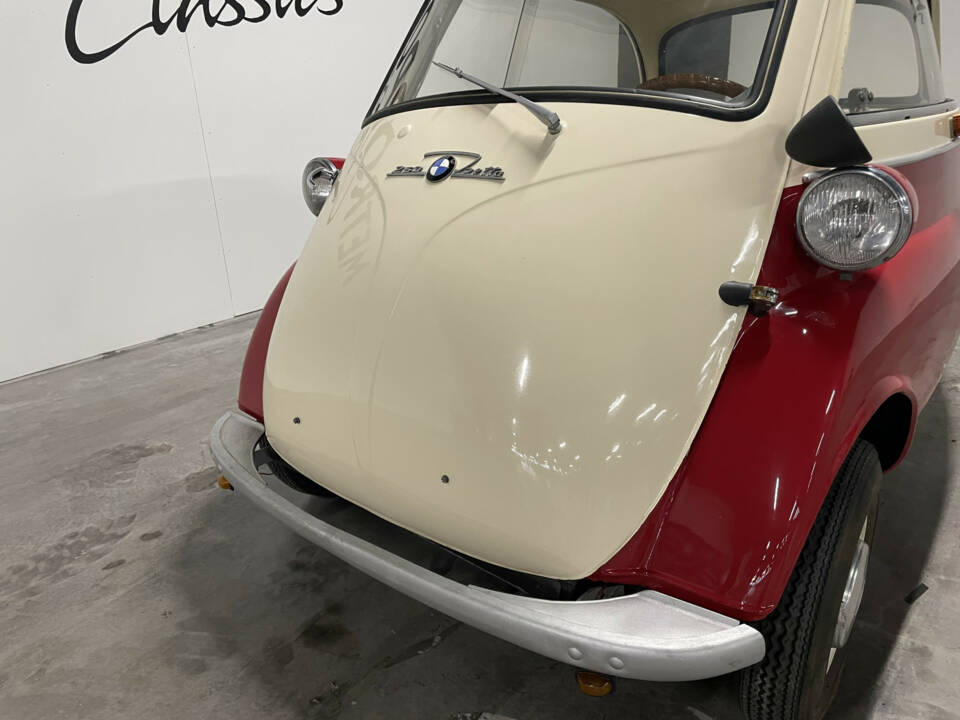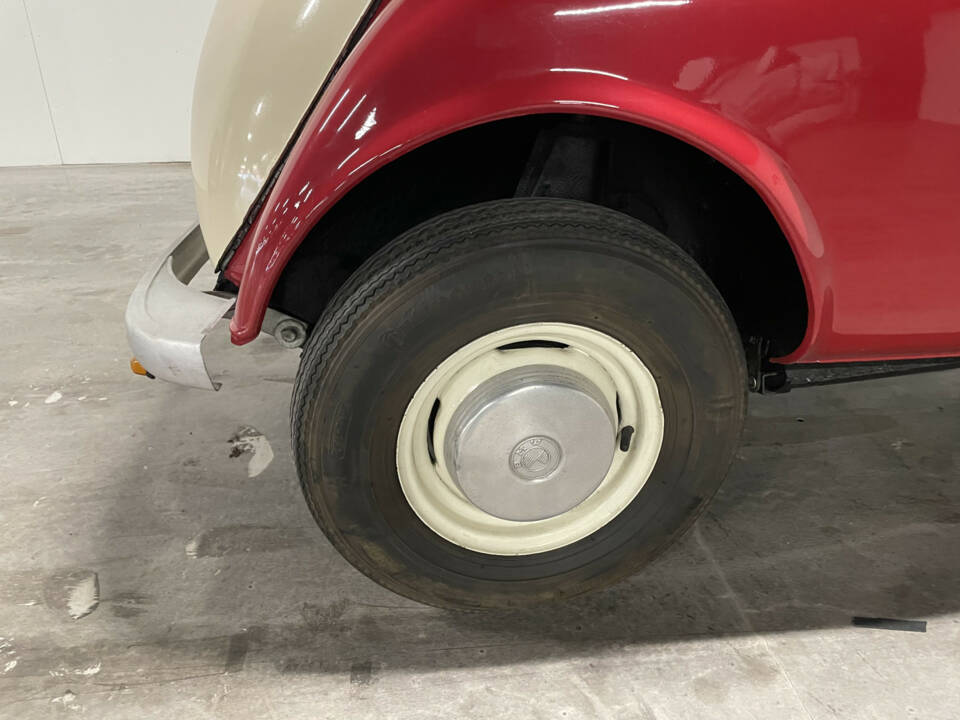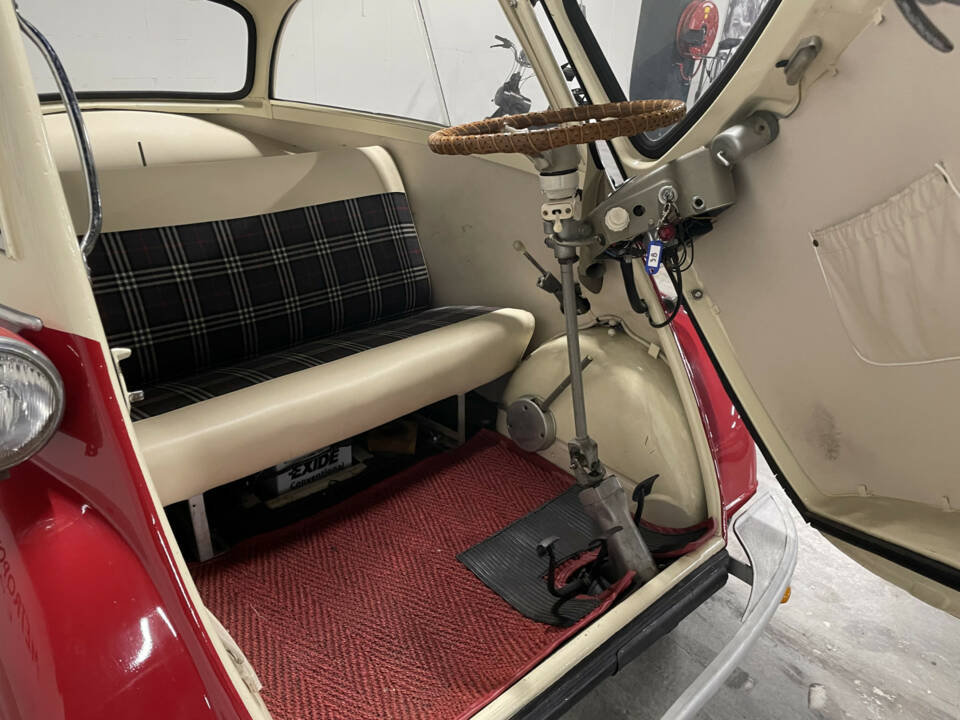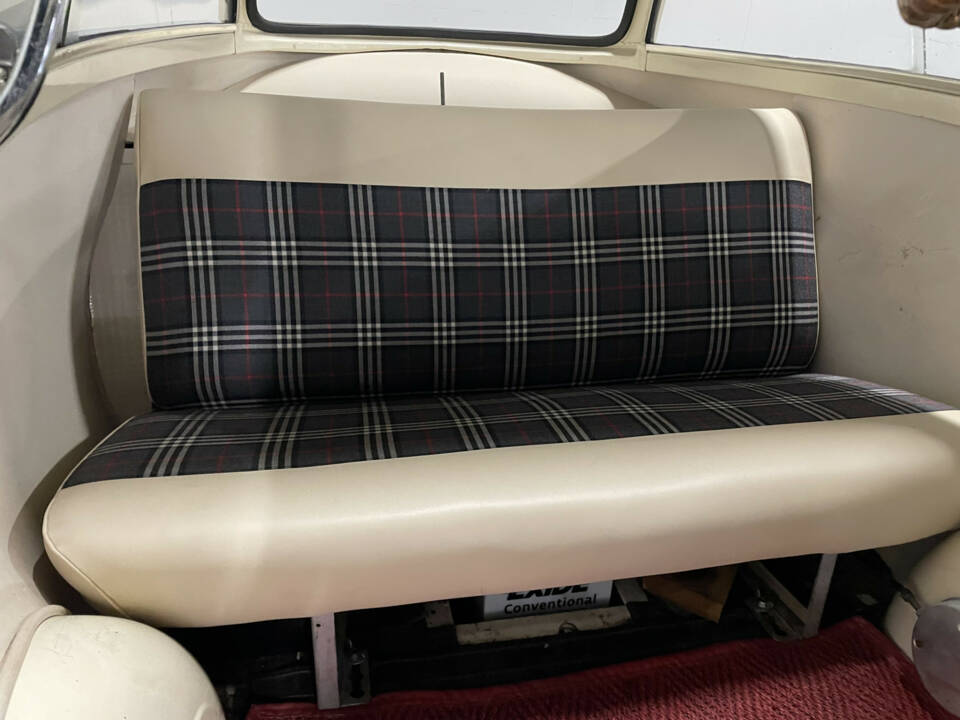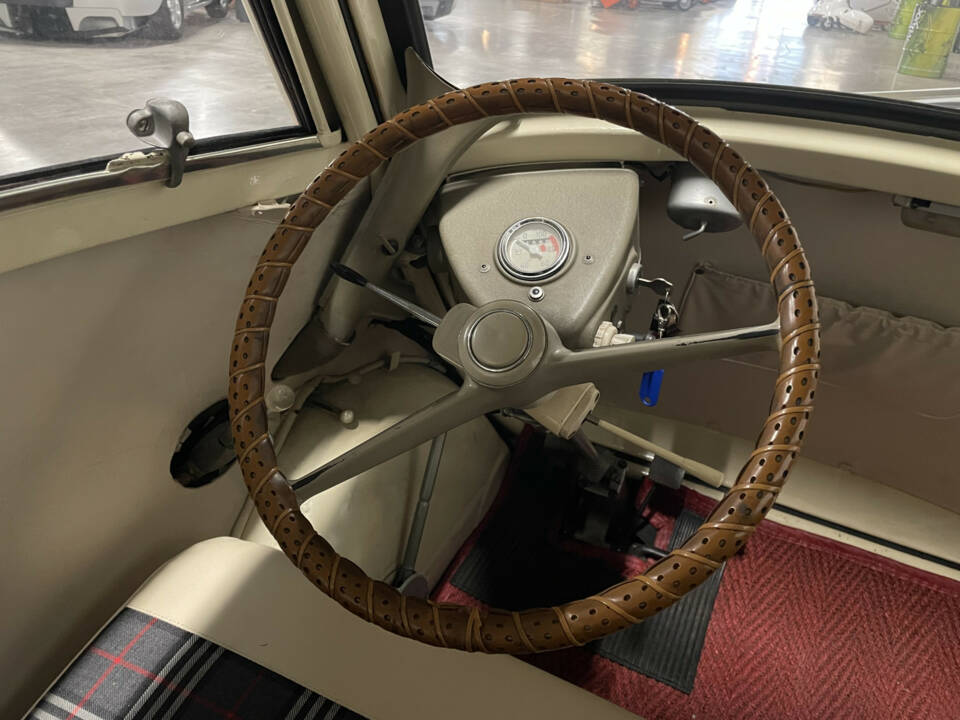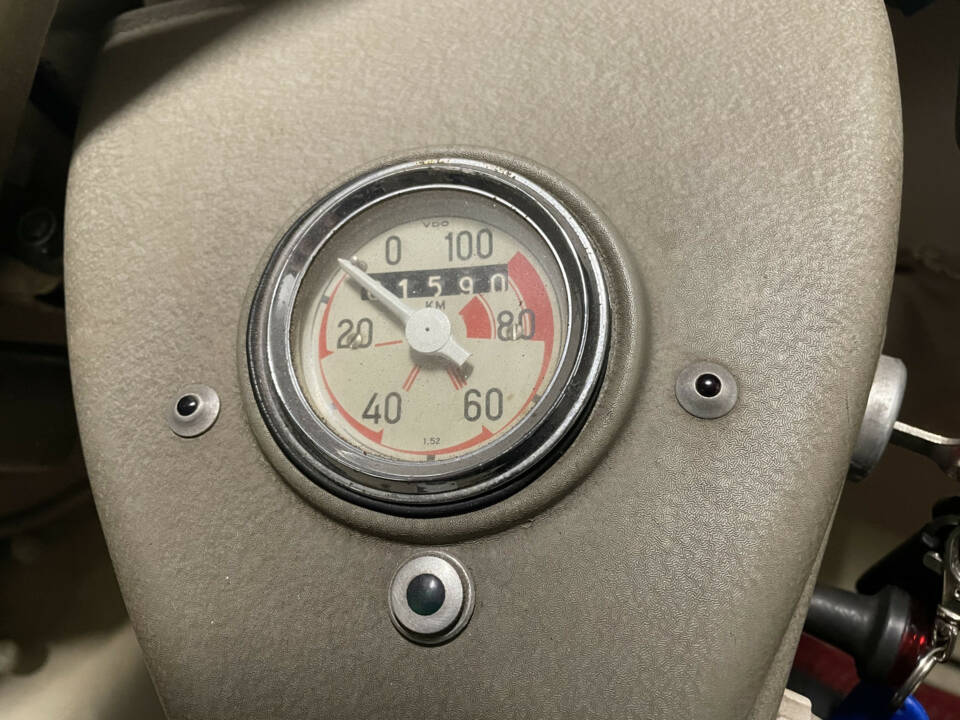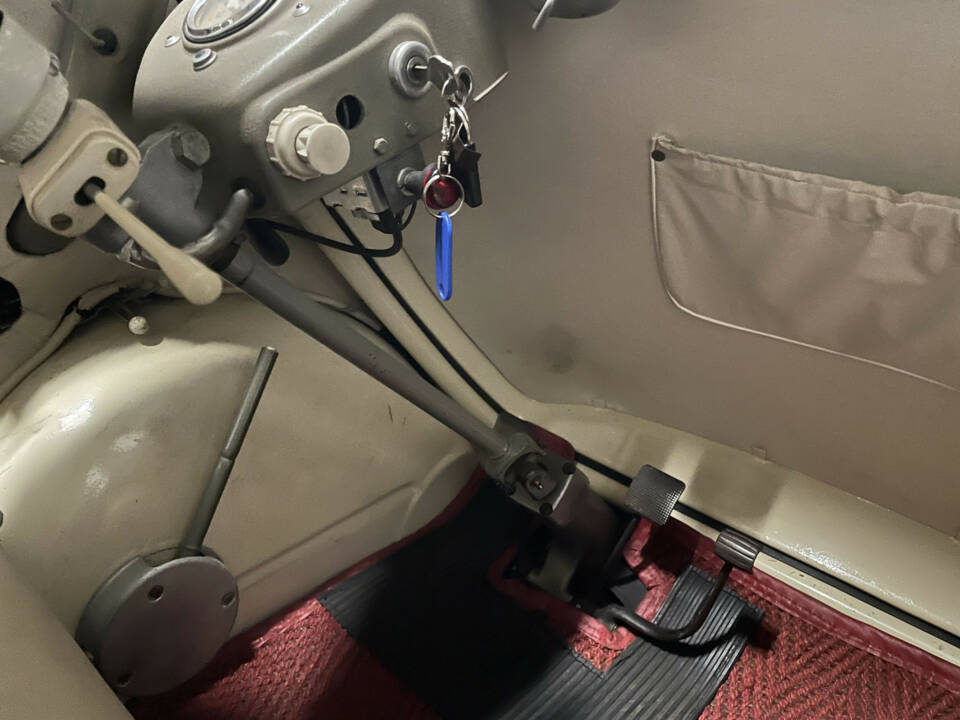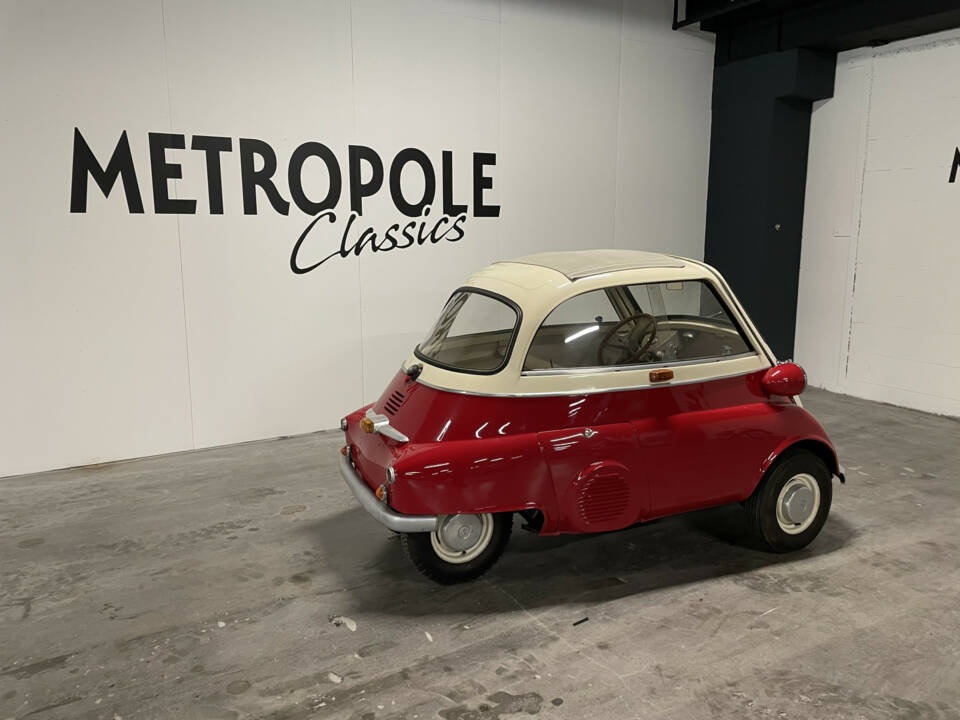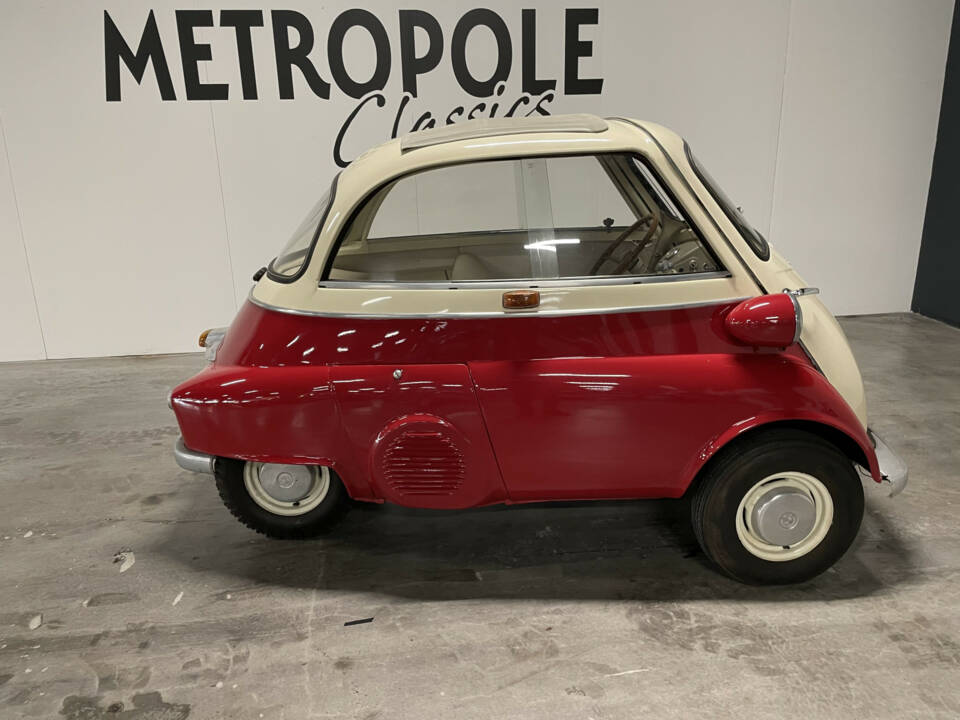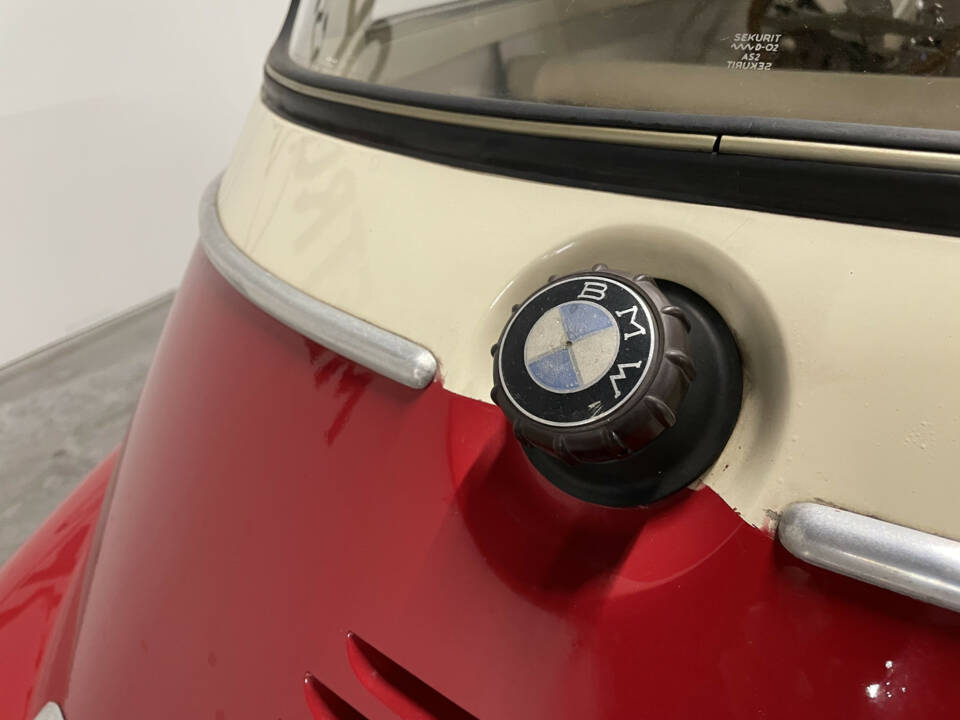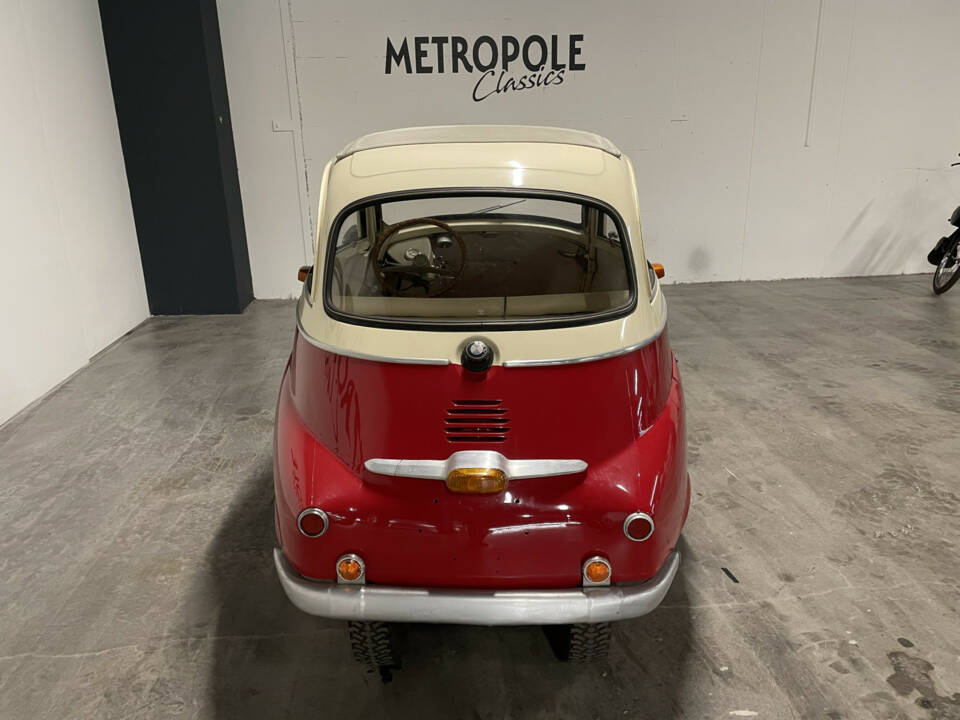1955 | BMW Isetta 250
BMW Isetta 250 M0552
BMW Isetta 250 M0552
BMW Isetta 250 M0552
Descrizione
Drive: Rear wheel drive
Empty weight: 350 kg
GVW: 350 kg
Top speed: 85 km/h
Mint condition. body and paint almost immaculate. interior like new. engine runs like it just left the factory. The 'front door' also closes perfectly and its fits are also correct. Very rare .
About the BMW Isetta 250:
The egg shaped Isetta caused a sensation when it was introduced to the motoring press in Turin Italy in November 1953 as it was unlike anything seen before and today widely regarded as the best microcar ever, it is certainly the archetypal 'bubble car ' and is today recognized and loved worldwide by classic car collectors and microcar enthusiasts alike. The totally unconventional design made waves at its introduction in Turin and from this influential debut grew a number of licensed establishments around the world, most famously BMW in Germany, where it became obvious to look at the working man's car. and by November 1955, ten thousand had been built.
Small, only 7.5ft long by 4.5ft wide and egg shaped, with bubble style windows, was seen by BMW as a gap between their motorcycle range and the luxury 501 models and the entire front of the car hinged outwards to allow access . In the event of an accident, the driver and passenger had to exit through the canvas sunroof. The steering wheel and instrument panel swung out with the single door as this made access to the single bench seat easier. The seat provided reasonable comfort for two occupants and a small child. Behind the seat was a large parcel shelf with a spare wheel underneath. A heater was optional and ventilation was provided by opening the fabric sunroof.
Initially, power came from a 236 cc (14.4 cu in), 7.1 kW (9.5 hp) 2-stroke motorcycle engine and a manual transmission with four forward and reverse speeds. A chain drive connected the gearbox to a fixed rear axle with a pair of closely spaced 25 cm (10 in) rear wheels. The first prototypes had one wheel at the rear, but with a single rear wheel the car was prone to tipping over, so the rear wheel layout was changed to two wheels spaced 48 cm (19 in) apart. This narrow track eliminated the need for a differential. The Isetta took more than 30 seconds to reach 50 km/h from a standstill. Top speed was only about 75 km/h (47 mph). The fuel tank held only 13 liters (3.4 US gal; 2.9 imp gal).
In 1956, the government of the Federal Republic of Germany changed the regulations for motor vehicles. Class IV driving licenses issued from then on could only be used for driving small motorcycles and no longer for driving motor vehicles with a capacity of less than 250 cc. At the same time, the maximum permissible capacity for the Isetta's tax category was 300 cc. This regulatory change encouraged BMW to review their Isetta micro cars. In February 1956 a 300cc engine was introduced. The engineers enlarged the single-cylinder engine to a diameter of 72 mm (2.8 in) and a stroke of 73 mm (2.9 in), giving a displacement of exactly 298 cc; at the same time they increased the compression ratio from 6.8 to 7.0:1. As a result, engine power increased to 10 kW (13 hp) at 5200 rpm and torque increased to 18.4 N⋅m (13.6 ft⋅lbf ) at 4600 rpm. The maximum speed remained at 85 km/h (53 mph), but there was a marked increase in flexibility, particularly noticeable on slopes and in October 1956 the Isetta Moto Coupe DeLuxe (Isetta sliding window) was introduced. The bubble windows were replaced by longer side windows.
Dettagli del veicolo
Dati veicolo
- Marca
- BMW
- Serie di modelli
- Isetta
- Modello
- Isetta 250
- Serie di fabbricazione
- Typ 101
- Prima immatricolazione
- Non fornito
- Anno di fabbricazione
- 1955
- Chilometraggio
- 1.590 km
- Numero di telaio
- Non fornito
- Numero del motore
- Non fornito
- Numero del cambio
- Non fornito
- Matching numbers
- Non fornito
- Numero di proprietari
- Non fornito
Dettagli tecnici
- Tipo carrozzeria
- Piccole auto (Piccola auto)
- Potenza (kW/CV)
- 9/12
- Cilindrata (cm³)
- 245
- Cilindri
- 1
- Porte
- 1
- Posizione volante
- Sinistra
- Cambio
- Manuale
- Marce
- Non fornito
- Trazione
- Posteriore
- Freno anteriore
- Non fornito
- Freno posteriore
- Non fornito
- Carburante
- Benzina
Configurazione individuale
- Colore carrozzeria
- Rosso
- Nome colore produttore
- -
- Colore interni
- Altri
- Materiale interni
- Stoffa
Allestimenti
- oldtimerLicensePlate
Condizione, registrazione e documentazione
- Ha un rapporto
- Condizione
- Rapporto di ispezione dell'ordine
- Targa storica
- Immatricolato
- Pronta a partire
